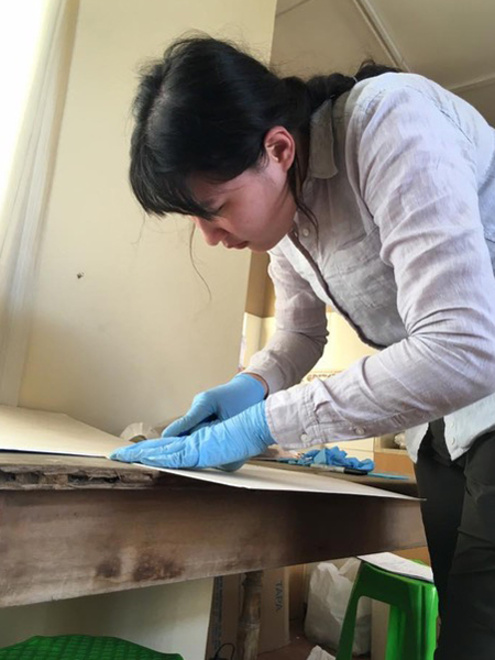
From June 25 to July 25, I joined the Conservation Internship Program organized by MOCHE, Inc. Based in Huanchaco, Peru, it emphasized conservation of archaeological textiles in combination with excavation fieldwork, archaeological site and museum visits, and safe storage management.
Gabriel Prieto, archaeologist at Universidad Nacional de Trujillo, generously welcomed us to participate in his current excavation project, and the Chimú and colonial textiles we worked on also came from his past excavations at the sites of Pampa la Cruz and the Church of Huanchaco. Through the program, I acquired basic skills of textile conservation—from documentation and cleaning to analysis and packing. I also gained exposure to the issues of site conservation as we discussed plans for a tourist path to Huaca Menocucho, an archaeological site in the Moche Valley, that would protect the site and benefit the surrounding local community. Visits to Chan Chan, Huacas de Moche, and the El Brujo Archaeological Complex facilitated our research discussions.
Interested in becoming a curator rather
than a conservator, and with no previous conservation experience, I was drawn
to this program because of my coursework and research experience gained at BGC over
the past year. “Damage, Decay, and Conservation” co-taught by Professor Ivan
Gaskell and “Cultures of Conservation” Fellow Jessica Walthew, instilled in me
the recognition of the importance of collaboration between art
historians/curators and conservators—a recurring theme at BGC—and thus the
desire to look from the other side. Through the internship, I gained a deeper
understanding of how excavation and conservation affect the condition and, in
turn, the study and display of objects. The multi-sensory knowledge germinated
from processing the objects is invaluable and transferable to my future
research in human-object relationship in different contexts such as in early
modern Europe.
— Shuning Wang
